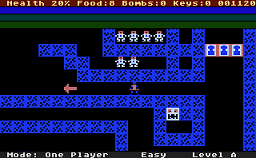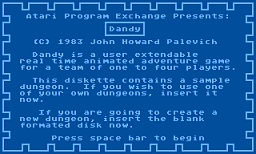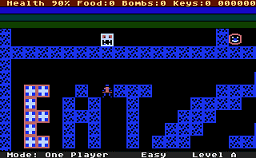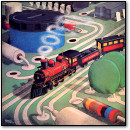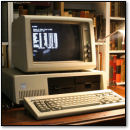Shortcut to Booting MS-DOS on the Compaq IA-1
Tuesday, January 10th, 2006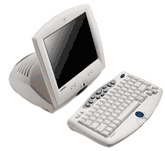 Ah…more on my continuing adventures with the not-so-vintage, but very much obsolete Compaq IA-1. I got Midori Linux running long ago, but I’ve since longed to turn this thing into an MS-DOS machine, maybe to play some old shareware games with. The hardest part of booting MS-DOS on the Compaq IA-1 is making a bootable partition on a compact flash card. The IA-1 treats its compact flash slot it has like a regular ole IDE hard drive connection, as compact flash cards have a native mode that emulates IDE hard drive behavior (and therefore, the compact flash, when in use, is not hot-swappable). The problem arises when you try to format a compact flash card using a common USB compact flash adapter: Windows treats the card as a removable drive, and thus, no low-level formatting options (like making it bootable with system files on it) are available.
Ah…more on my continuing adventures with the not-so-vintage, but very much obsolete Compaq IA-1. I got Midori Linux running long ago, but I’ve since longed to turn this thing into an MS-DOS machine, maybe to play some old shareware games with. The hardest part of booting MS-DOS on the Compaq IA-1 is making a bootable partition on a compact flash card. The IA-1 treats its compact flash slot it has like a regular ole IDE hard drive connection, as compact flash cards have a native mode that emulates IDE hard drive behavior (and therefore, the compact flash, when in use, is not hot-swappable). The problem arises when you try to format a compact flash card using a common USB compact flash adapter: Windows treats the card as a removable drive, and thus, no low-level formatting options (like making it bootable with system files on it) are available.
Luckily, with a tip from the I-Appliance BBS (an incredible resource, by the way), I found a freely-distributable program from HP that they made to format their Disk-On-Key USB JumpDrives (or whatever they call them newfangled things these days) to make them bootable. And guess what– it seems to work with all removable drives! It’s an incredibly nifty little program; there’s even a DOS version. So how do you get it? Relax, I’ve done all the work for you (impatient people who don’t actually read what I write will no doubt be struggling to find the link — buried in the text!). Here, in this file, is a perfect little Compaq IA-1 MS-DOS kit. Included in the zip file is the aforementioned program installer (for Windows, also includes DOS version), and a directory containing a modified version of MS-DOS that came with Windows 98 (some wise-guy Windows-hata changed all the files to say “MS-DOS 7.10” instead of “Windows 98” when you boot, etc., but it works great). All you have to do is install the program, set up your compact flash adapter, insert a card, run the HP program, and format it to include system files. When it asks which files to include, simply point it to the “MS-DOS 7” directory that is included in the ZIP. There you go.
After that, you’re on your own. I’ve played a few games of Scorched Earth and ZZT on it so far, but it’s a tad bit lacking without any sort of PC speaker sounds. Also, I have absolutely no DOS drivers for any of the IA-1’s built-in hardware, so unless you find them or write your own, you’re stuck to only the most rudimentary of programs. But still, MS-DOS on the IA-1 is a wonderful starting point to bigger and better things. Windows 98 on a microdrive anyone?
Another IA-1 update: I bought a used NetGear MA111 wireless 802.11b wireless network adapter because its chipset is supposedly supported by the drivers built-into the Midori Linux distro I’m using. So far, no luck getting it working, but I haven’t tried everything yet. I’ll mess with it some more later.
Also, here’s a cool PC World article on why Internet Appliances never took off. Tomorrow’s computer collectibles…today! Get ’em before they hit the dump.
